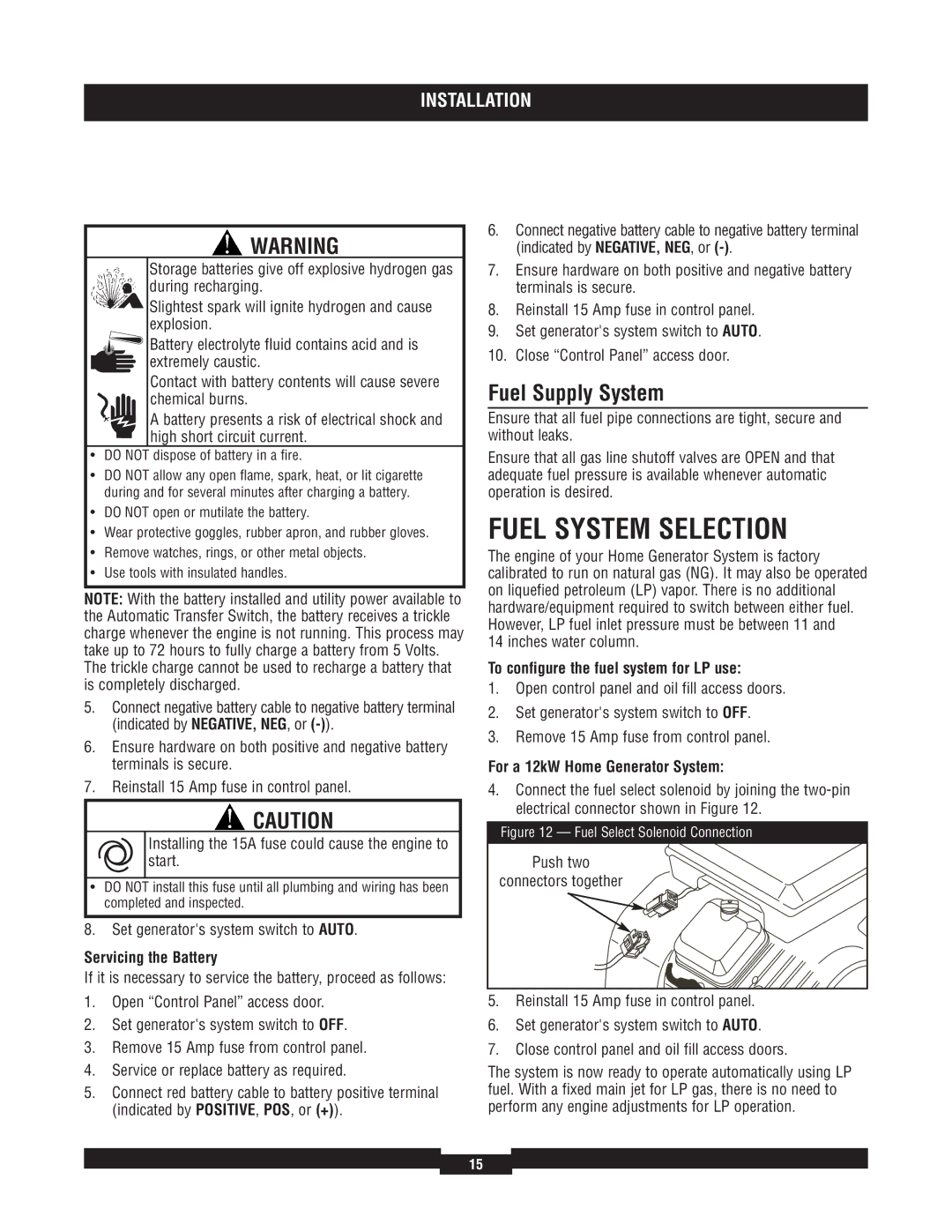40229, 40204, 40213, 40234, 40210 specifications
Briggs & Stratton is a recognized leader in the small engine market, catering to both homeowners and professionals with a wide range of reliable engines. The models 40210, 40234, 40213, 40204, and 40229 are notable entries in this lineup, each designed to deliver power, efficiency, and durability for various applications.The Briggs & Stratton 40210 is often appreciated for its compact size and robust performance in lawn care equipment. It features a 140cc engine with an overhead valve design that enhances fuel efficiency and reduces emissions. This model supports easy starting with its dependable pull-start system and is well-suited for pushing mowers and other light-duty machines.
In contrast, the 40234 model stands out with its 190cc engine, which provides an excellent power-to-weight ratio. This engine is engineered to tackle medium-duty tasks, making it ideal for residential lawn trimming and garden maintenance. The 40234 incorporates advanced features like a ReadyStart technology that eliminates the need for priming, allowing for a hassle-free starting experience in various weather conditions.
The Briggs & Stratton 40213 shares similarities with the 40234 but enhances user interaction and maintenance with a more user-friendly design. It employs a 163cc engine that combines optimal power with low vibration, ensuring smooth operation. This model is particularly favored for its extended runtime, enabling users to complete their lawn care jobs without frequent interruptions.
For those seeking a slightly less powerful option, the 40204 is an excellent choice. Featuring a reliable 125cc engine, it is designed for lighter applications. This model is particularly notable for its lightweight build, making it highly maneuverable and easy to handle for novice users and homeowners alike.
Lastly, the 40229 offers a balance between power and practicality, housing an 11.5 gross torque engine rated for robust tasks. This engine is crafted with innovative technologies that promote fuel efficiency while minimizing noise output, making it a favorite among environmentally conscious users. It also integrates user-friendly features, such as an easy-access air filter, which simplifies maintenance.
Across these models, Briggs & Stratton ensures high-quality construction and usability, with features like dual air filtration systems and durable components that withstand rigorous use. Each engine encapsulates the brand's commitment to innovation, performance, and reliability, catering to the diverse needs of consumers in the landscaping and outdoor maintenance sectors. Whether for small residential tasks or larger projects, these engines are designed to empower users with the performance they need to get the job done efficiently.

